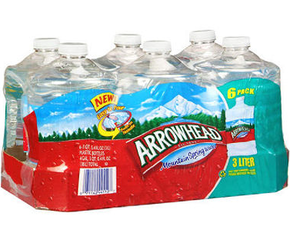Are Cast Iron Skillets Bad For You?
Short answer
No, cooking in cast iron skillets is not bad for you. These skillets can actually add iron content to your food, which provides many health benefits. Just be careful—cast iron skillets get hotter quicker and are more susceptible to rust than other cookware.
Overall beneficial to your health. Things rated a 'B' may have some harmful qualities to pay attention to.
View Full Grading System
Category 'A'
Very healthy and numerous health benefits. Side effects are rare. Things rated an 'A+' are typically necessary for survival (for example, water).
Very healthy and numerous health benefits. A few harmful qualities may be associated, but only under certain circumstances such as an allergic reaction.
Very healthy and numerous health benefits. Harmful qualities may be associated, but aren't usually serious.
It is important to note that even the best things in life can become bad in immoderate amounts. So, although something may be rated an 'A+', overconsumption/overdoing can bring unwanted effects.
Category 'B'
Very beneficial to your health. Things rated a 'B+' may have a few harmful qualities to pay attention to.
Overall beneficial to your health. Things rated a 'B' may have some harmful qualities to pay attention to.
More beneficial to your health than not. However, harmful qualities are most likely associated and shouldn't be overlooked.
The main difference between category 'A' and category 'B' is the harmful qualities typically present in 'B' items. Serious side effects are usually uncommon, but are still possible and should be taken note of.
Category 'C'
Both beneficial and harmful qualities associated. Things rated a 'C+' are typically a bit more on the beneficial side. Still, moderation is important.
A fairly even ratio of beneficial and harmful qualities. Moderation is important. Very general topics that can lean towards both sides of the spectrum will be placed here as well. Rice, for example, can be good or bad depending on the type.
More harmful than beneficial. Side effects are common, especially when consumed/done excessively. Moderation is very important.
Category 'C' usually denotes to both good and bad qualities. When it comes to this category, it is important to keep this word in mind: moderation.
Category 'D'
Harmful to your health. Although benefits may be associated, the bad most likely outweighs the good. Moderation is very important.
Harmful to your health. A few benefits may be associated, but the bad outweighs the good. Moderation is extremely important.
Harmful to your health. Very few, if any, benefits are present. Things in this category should be avoided as much as possible.
Category 'D' is typically for things that are more harmful than beneficial. While consuming/doing something unhealthy once in a blue moon shouldn't hurt, we definitely recommend eliminating 'D' items as a regular part of your routine/diet.
Category 'F'
Category 'F' is for things that fail to bring anything beneficial to the table, and are very harmful to your health. We recommend completely avoiding anything in this category. Long-term side effects of 'F' items are usually very serious.
Category 'N'
'N' stands for neutral. Things placed into this category are generally (a) neither good nor bad for you, or (b) lack the necessary evidence to reach any conclusions.
Long answer
We put a lot of thought into the food we eat—checking labels, logging calories and even scanning this site for the latest hidden health hazards. However, far less of us give as much consideration as to how that food is prepared. But we should: all cookware is different and offers its own distinct health advantages and disadvantages.
Take cast iron skillets, for starters. This cookware has been around for centuries—long before the kitchen stove was ever invented. They are durable, relativity inexpensive and incredibly simple to use and care for. In fact, many chefs advocate never washing cast iron cookware. Instead, they suggest wiping the skillets down after every use or scrubbing them out with coarse salt.
Beyond affordability and ease of use, by far the biggest advantage of cooking with these old-school skillets is the iron it adds to your meals. Acidic foods with a higher moisture content that require longer cook times are especially prone to iron absorption. For instance, spaghetti isn’t typically something that anyone would consider an iron-rich food—it only provides about one milligram of iron per serving. However, the American Dietary Association found that if you cook spaghetti in a cast iron skillet, the dietary iron content increases sixfold.
That might not seem like a ton, but women only need 18 grams of iron per day. And in this scenario, switching to cast iron cookware can help provide up to one-third of that daily requirement. Iron is beneficial because it helps transport oxygen through the body, leading to higher energy levels and healthier skin, nails, and hair.
While there are many perks to cast iron skillets, there are also a few minor disadvantages that you should be aware of. First, cast iron skillets are fairly low-tech. They are actually constructed as one single piece, allowing them to transfer heat quickly and evenly. But this also means that the handles get just as hot, just as fast. If you’re not careful, cast iron skillets can easily lead to severe burns. For this reason, it’s important to use an oven mitt whenever cooking with one of these skillets.
Secondly, cast iron skillets are not intended to boil water, as it causes the metal to warp and rust. Cooking with rusted metal can be dangerous—rust itself does not cause tetanus, but the bacteria associated with it does. So if you start to notice rust on your cast iron skillet, it’s probably time to throw it out and buy a new one.
Possible short-term side effects
- severe burn
-
tetanus (from rusted cookware)
Benefits
- inexpensive
-
durable
-
easy to use
-
low maintenance
-
adds iron to food
Please turn your Ad Blocker off to see this content. Thank you!

 Approved by
Approved by 














